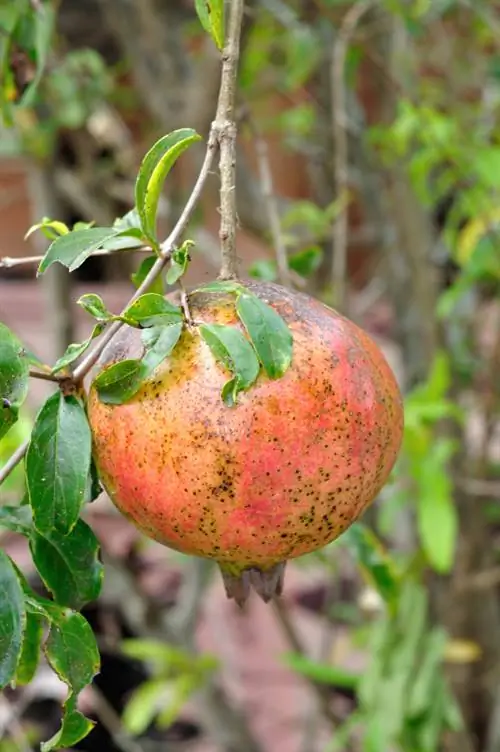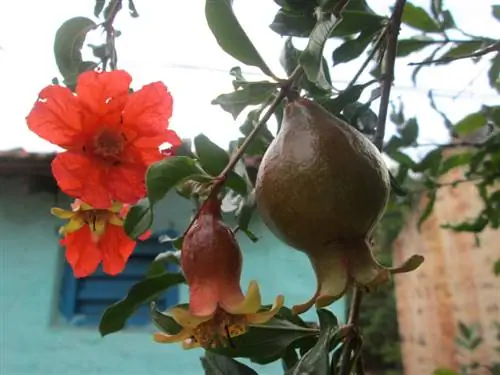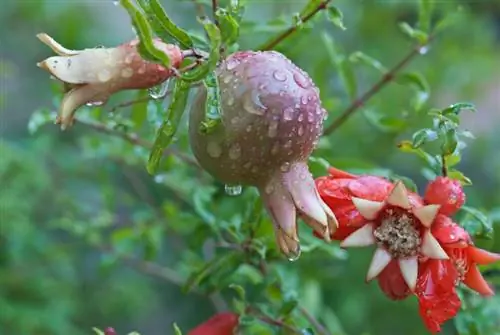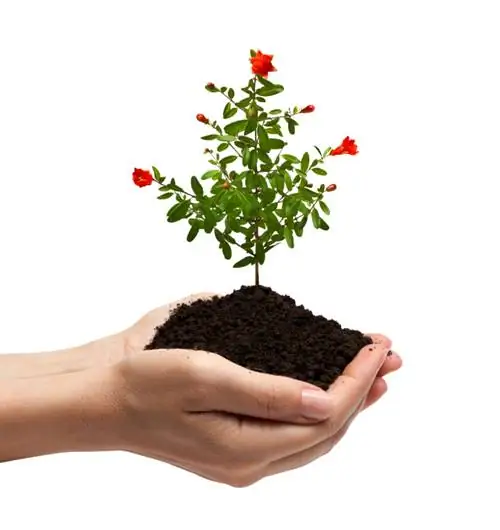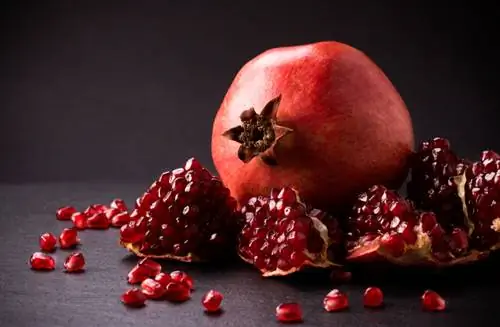- Author admin [email protected].
- Public 2023-12-16 16:46.
- Last modified 2025-01-23 11:20.
Pomegranates are valued primarily for their juicy content. If you are not careful when opening and eating the fruit, the juice splashes can leave deep red stains on your clothing or tablecloth.
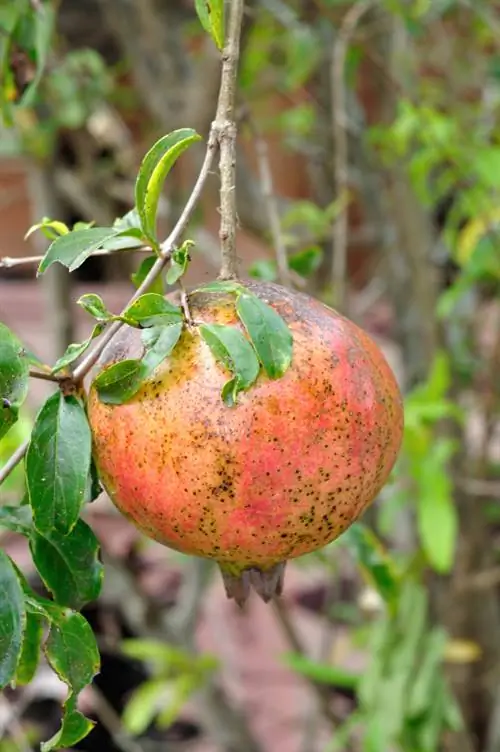
How to remove pomegranate stains?
To remove pomegranate stains, treat immediately with stain remover, gall soap, bleach, lemon juice and s alt. Pre-treat robust textiles with bleach; for sensitive fabrics, use mineral water, lemon juice and gall soap.
The ripe pomegranates have a pleasantly tart-sweet taste. The fruit's edible seeds consist of a solid core surrounded by a glassy-looking fruit coat. This shell, which is bulging with juice, bursts under even slight pressure and the juice leaves dark red stains on light-colored fabrics.
Avoid stains: open pomegranate correctly
To avoid splashes of juice when opening a pomegranate, proceed as follows:
- first cut off the flower base with a sharp knife,
- then cut the shell all around from top to bottom two to eight times,
- break the fruit apart at the cut areas,
- Remove the kernels into a bowl with your fingers; if necessary, they will fall off when you tap the bowl lightly.
It is often recommended to break the fruit apart and remove the seeds in a bowl filled with water. This means that any splashes of juice remain under water and it is easier to “separate the wheat from the chaff” as the heavy kernels sink to the bottom of the bowl while the light pieces of intermediate skin remain floating at the top. To make juice, cut the pomegranate in half and squeeze it using a citrus press.
Treat stains as quickly as possible
As with red wine, the same applies to pomegranates: fresh stains are best removed! The easiest way is to use a commercially available stain remover (€4.00 on Amazon). If you don't have the right remedy at hand, tried and tested home remedies can help:
- Galle soap,
- bleach,
- Lemon juice in combination with household s alt.
For robust textiles made of pure white cotton or cotton blends, we recommend pre-treating them with a bleach (e.g. Dan Klorix, if necessary previously diluted with water) and then washing them by hand or in the washing machine.¹
Treating stains on colored or delicate fabrics such as silk or wool requires a little more effort and unfortunately often comes at the expense of the colors. You should first absorb the remaining liquid with kitchen paper. By adding carbonated mineral water to the stain, you can reach the color particles that have penetrated deeper into the fabric and in this way “water down” the intensity of the color.
Drizzling lemon juice on the stain also has a bleaching effect. After an exposure time of around 30 minutes, you can also add some household s alt to it, which will then draw the remaining liquid color particles out of the fabric. Treating it with gall soap can be just as helpful. Apply it directly to the stain when moistened and allow it to take effect. Then wash the garment with heavy-duty detergent.
Tips & Tricks
Pre-treatment with the ink killer and subsequent post-treatment with lemon should help with old pomegranate stains. When in doubt, leave no stone unturned!
¹ Source:

